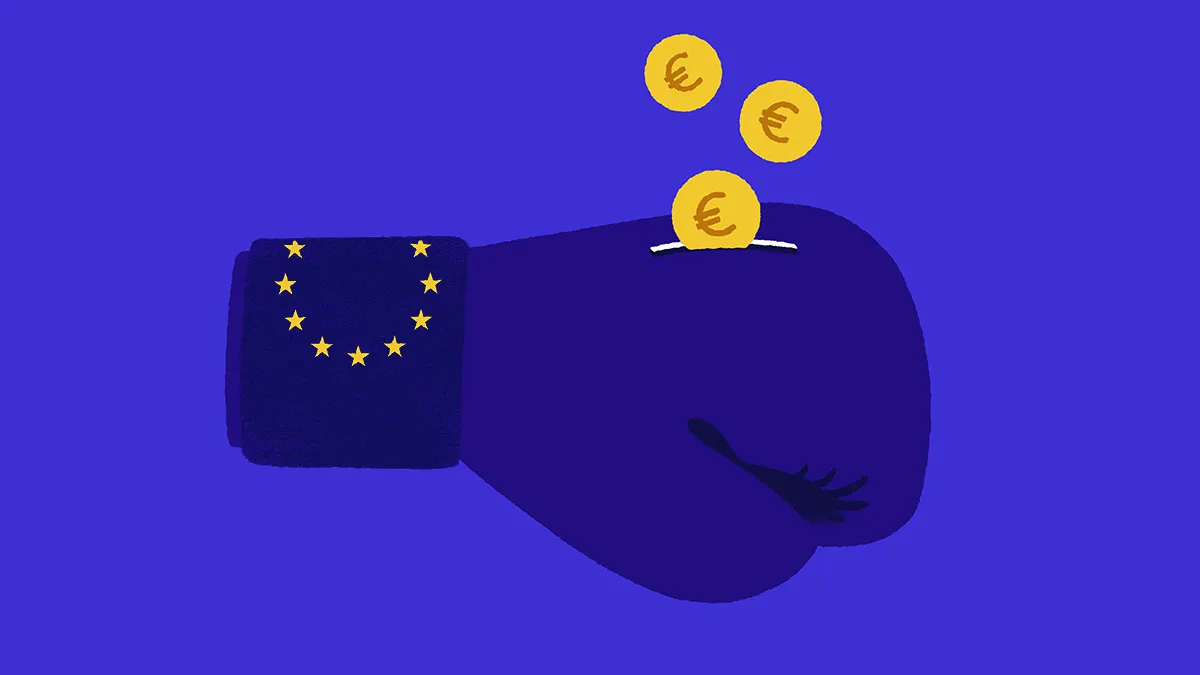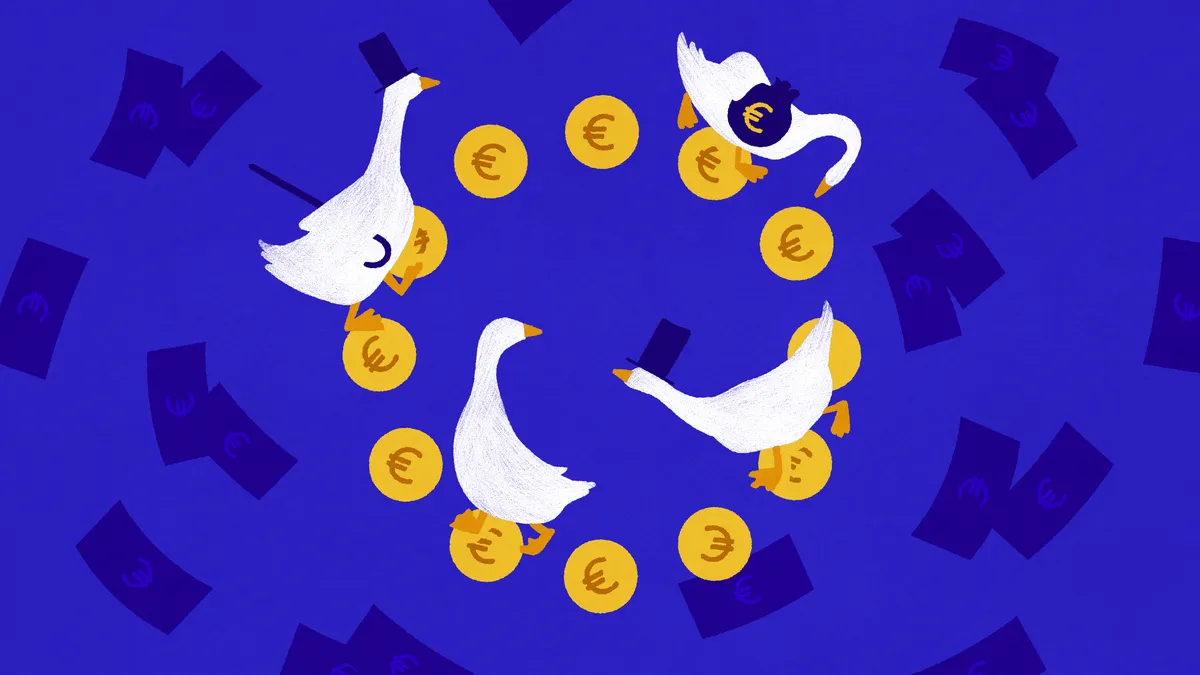The European Commission has finally unveiled its draft proposal for the bloc’s future Multiannual Financial Framework (MFF), the €2-trillion budget that will run from 2028 to 2034.
It features a novelty, in the form of a new European Competitiveness Fund (ECF), covering areas from energy and climate to health, defence and digital.
Commission President Ursula von der Leyen’s proposed financial blueprint aligns with the leading priority of her new mandate — ensuring the EU stays competitive in a fast-moving global environment.
To tackle what she called “redundancy and overlapping” in the previous MFF, von der Leyen set out to significantly restructure and simplify the new budget.
The ECF will have over €410 billion in earmarked funds, including from the bloc’s R&D programme. The money pot would put the bloc’s overarching policy priorities “under one roof”, making it “more powerful” and easier for authorities to manage, von der Leyen said.
Presenting her budget plan on 16 July, von der Leyen said the ECF will support the bloc’s ambitions to cut strategic dependencies and “lead the global race for clean and smart technology”.
While the draft budget is just the first step in a difficult and lengthy negotiating process, the Commission is hoping that the ECF will help deliver on strategic priorities.
Contexte breaks down the Fund’s priorities, how it will work in practice and who can benefit.
One fund to merge them all
The creation of the ECF would terminate a dozen individual programmes —covering everything from climate to defence and health — and absorb their objectives into its wider net. These programmes are:
- The LIFE Programme for the Environment and Climate Action (LIFE)
- The Digital Europe Programme
- The European Defence Fund (EDF)
- The Act in Support of Ammunition Production (ASAP)
- The European Defence Industry Reinforcement through common Procurement Act (EDIRPA)
- The European Defence Industry Programme
- EU4Health
- The EU Space Programme
- The IRIS² Satellite Constellation
- InvestEU
- Competitiveness of Enterprises and SMEs (COSME)
While Horizon Europe, the EU’s research and innovation programme, will be part of the ECF, it would have its own €175bn standalone budget— a doubling of its current funding.
Industrial Strategy Commissioner Stéphane Séjourné said this would help put research projects into action in strategic sectors.
The EU Innovation Fund will also be part of the ECF, and its €41bn envelope will go to the development of climate-neutral technologies.
Divvying up the funds
Over the MFF’s seven-year lifespan, the Commission wants the ECF to focus on four priority areas, each with a dedicated budget.
One of these key areas is climate and energy policy. Out of the ECF and the EU Innovation Fund, the Commission wants to deploy €67.4bn for clean transition and industrial decarbonisation projects, helping the EU meet greenhouse gas reduction targets and achieve net-zero emissions by 2050.
Von der Leyen also proposed that 43% of the ECF — and 35% of the overall MFF, some €700bn in all — be dedicated to achieving six climate and biodiversity objectives. This is defined in the regulation establishing a performance framework and other horizontal rules, but this would not be a condition for access to funding.
The Connecting Europe Facility — which funds energy and transport infrastructure projects across the bloc — will remain as a standalone envelope and also set aside €29.9bn just for energy-related projects, a significant increase from current figures.
Additional ECF envelopes include €51.5bn for digital sovereignty, €20.4bn for health, biotechnology and the bioeconomy and €125.2bn for space and defence.
The remaining €11bn will be used as a guarantee to finance projects aimed at more general ECF objectives, in order to address market failures or give a boost to sectors deemed strategic.
Fund allocation
The ECF will work with different financing tools, including loans, subsidies, equity, public procurement or guarantees. A single project can benefit from one or more of these tools. The choice of tool depends on factors such as the market sector, the beneficiary or the stage of advancement of a given project.
The Commission wants to simplify access to different financing programmes, notably by defining a single set of rules for applicants, instead of the various rulebooks they must follow at present, depending on the programme or the type of financing tool granted.
The new MFF nevertheless upholds a longstanding EU rule, according to which projects can be funded only in part from Brussels. The level of financing, the MFF draft says, “should be as low as possible and as high as needed” for a given project.
Multiplying euros
Article 21 of the draft MFF also establishes the InvestEU instrument, which follows the blueprint of similar past investment programmes, such as the Juncker Plan of a decade ago.
It will create an EU budget guarantee of up to €70bn, provisioned at 50%. This will be used to back loans for EU-wide projects. The MFF text does not specify leverage rates. In 2018, a previous InvestEU instrument was based on a leverage effect of 1 to 13.7.
The Commission has favoured this type of mechanism since 2015, as it allows for the disbursement of euros only in the event that an investment fails.
The Commission proposed adjusting provision rates via a delegated act and, if need be, raising the maximum amount of the budget guarantee by up to a further 20%.
EU preference
The Commission is pinning a novel budgetary priority to the ECF: buy European.
The ECF’s article 10 champions the concept of “EU preference” as a means to bring manufacturing of key goods to European Union territory and to “protect strategic and economic security interests”.
Speaking to reporters, Séjourné said this would ensure EU public funds “benefit companies located in the EU”.
But the ambition has been scaled back from leaked working drafts previously obtained by Contexte — in these, access to funds was to be made dependent on meeting some EU preference criteria. The final draft now says simply that fund allocation “may” be subject to the criteria.
These criteria include: requiring beneficiaries to be established in the EU, or to source components from European entities; not transferring research results and intellectual property rights to an entity based outside the bloc for five years after the end of a funded project; and not depending on a non-EU entity for decision-making related to the funded project.
Skipping bureaucracy in tough times
Citing the string of crises that hampered her first five-year mandate — from the Covid-19 pandemic and the energy price crisis to the Russian invasion of Ukraine — von der Leyen said that, this time around, the Commission aimed to adopt “a budget built for resilience and agility”.
Past budgets, she said, were too rigid to let the EU “act fast and with the financial firepower necessary” to face a crisis.
The next MFF will allow carve-outs from the rules in cases of “overriding public interest”. This would mean, for example, that projects could be granted funding without going through a public procurement call.
The draft proposal would also waive documentation requirements when public tenders need to be fast-tracked, in particular by allowing authorities to rely on sworn statements from applicants saying they meet the necessary criteria; they would then have to substantiate that within three months of securing a contract.
The decision to award funds must be made within 60 days of the deadline for submitting proposals.
Derogations from the eligibility criteria can also be allowed, though only for a limited period. This would concern in particular the criteria on an applicant’s place of establishment; beneficiaries must comply with these criteria by a date to be specified when the funds are granted. Otherwise, the project will be rendered ineligible and the funding would have to be returned.
Alignment with the Commission’s annual work programme
While the funds allocated to the ECF’s four main thematic priorities are earmarked for the next seven years, the amounts remain indicative.
The Commission said that it will define the allocation, contributions and expected results for each year’s budget in its working programmes — which set out its yearly policy and legislative agenda — and that these decisions will be in line with “changing political priorities”.
For any given year, the work programmes will also specify eligibility criteria, fund allocation procedures, the types of available financing, and the single co-financing rate for grants.
The Commission’s work programmes are adopted after consultation of relevant committees referred to in Article 83; they may be annual or multiannual.




